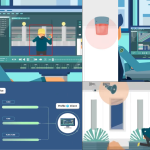ONVIF recently announced its addition of open source through GitHub, an online open source development platform. This move will automate much of the process-oriented work that is required to produce technical specifications. As such, Per Björkdahl, chairman of the ONVIF Steering Committee answers a few top questions regarding this new organizational development.
- How will this move to open source impact the development of future profiles?
Profiles are not included in this strategy, as the open source development is limited to the engineering of ONVIF network interface specifications. Profile development will remain under the purview of ONVIF member companies. Our six existing profiles that address video streaming, storage and retrieval, quick installation and access control configuration will remain unaffected, as will our new Release Candidates for Profile D for access control peripherals and Profile M for metadata. That being said, as profiles are groupings of functionalities that originate in the ONVIF main network interface specifications, we widely expect that specification contributions realized via open source will help in some way to support the development of future profiles. - How will this impact the ONVIF conformance process or ONVIF membership?
The addition of open source development will have no impact on the product conformance process. Additionally, it won’t have any impact on the ONVIF membership process or anything to do with the development of the test tools used to determine product conformance to ONVIF profiles. This addition only affects one part of the work we do at ONVIF – the development of network interface specifications for IP-based physical security products. - Who can contribute to this development on GitHub?
While anyone will be able to contribute to ONVIF network interface specification development using GitHub, only ONVIF Full and Contributing members will continue to have early access to and the ability to provide guidance on future new profiles introduced by ONVIF. A company still needs to maintain ONVIF membership at the Full, Contributing or User level to declare ONVIF conformant products, to use ONVIF conformance tools, and to use the ONVIF logo and ONVIF profile logos. - How will this new initiative impact the way systems integrators and end users utilize ONVIF? What new industries can we expect to reach with this development?
Nothing will change in the way that systems integrators and end users use ONVIF-conformant products. However, we anticipate that the streamlined specification engineering process via GitHub will enable ONVIF to bring cutting-edge technologies to the marketplace more quickly than before. Additionally, this will enable us to easily incorporate external contributions from software engineers and developers from industries across all sectors. This includes IoT, Artificial Intelligence and cloud services. This is especially exciting as the end result will be greater flexibility in the types of solutions that are interoperable with one another for a wider range of solutions that both systems integrators and end users can benefit from. - What else can the industry expect to see as a result of this initiative?
Open source development is a trend that has proven to be successful and makes specification contributions easier and more efficient. The benefits have been realized by countless organizations who have realized increased collaboration, additional transparency and new perspectives that have allowed their organizations to thrive and expand. With a solid footing in the security industry, ONVIF’s interoperability specifications have the capability to both provide and capitalize on opportunities in other technology sectors, providing a bridge between security technology and building automation systems or other ancillary systems that depend on the standardization of data for basic interoperability.
For more information about ONVIF, visit our blog.






